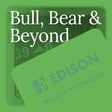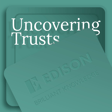
10. Bull, Bear & Beyond – SenSen Networks: executive interview
SenSen Networks’ CEO, Subhash Challa, and CFO, Christian Stevens, discuss how the business has transformed over the past 12 months and the factors that have enabled SenSen to deliver strong business momentum on a significantly lower cost base.
**************************************************************************************
About ‘Bull, Bear & Beyond’
'Bull, Bear & Beyond': features candid conversations with senior executives and from our own team of experts from across industries, exploring strategy, innovation, and the opportunities shaping their markets and 60-second pieces are a compressed summary of content designed to convey our message in a single, easily shareable hit.
About Edison:
Edison is a content-led IR business. We believe quality investment content should inform all investors, not just brokers. Our mission: engage and build bigger, better-informed investor audiences for our clients.
Edison covers 50+ investment trusts, read about them here: https://www.edisongroup.com/equities/investment-companies/
Original interview published on 21/10/2024 and reposted as a podcast

